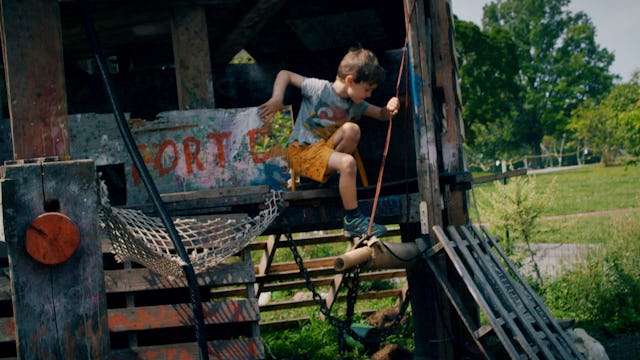Instead Of Telling Kids To ‘Be Careful’, Try These Phrases Instead

When I was 11, I spent most of the summer at a rope swing with my friends. It was along the Provo River, middle of nowhere Utah. No parents around, just kids. More or less, it was a husky brown rope strapped to a dying tree, and we spent hours there, working on backflips, and front flips, and belly flops.
Sometimes we climbed up into the tree and jumped into the river from dangerous heights. Sometimes we flat out fell from the tree. Sometimes we got into fights. No one ever, not once, told us to be careful. We got into trouble, and we figured out how to get out of it. This was back in the mid 90s, back when parents could let their children go off and do something like that.
I have an 11-year-old son, and were he to ask if he could go to a rope swing with his friends, I’d honestly wonder if I’d end up making trending news by letting him go alone. But at the same time, I don’t know if he’d even ask. A couple years ago, he and I watched The Goonies. Right before the young boys followed the pirate’s treasure map into the abandoned summer restaurant — the place where the criminals were hiding out — Tristan said, “Where are their parents?”
The reality is, raising children is very different now — helicopter parenting isn’t really an option anymore; it’s mandatory (I am not happy about this). As a parent who was raised in a time when I learned a lot by getting into dangerous situations and finding my way out of them, I cannot help but wonder what this is doing to my children’s overall development and ability to cope with future struggles.
Naturally, there are studies showing that not allowing your children to explore and have adventures like I did as a young man can cause later anxiety issues. For example, Researchers from Macquarie University’s Centre for Emotional Health, along with partners from the University of Amsterdam and the University of Reading, surveyed 312 families with preschool-aged children across the Netherlands and Australia about what a lack of risk is doing to our children.
“Results showed that the parents who… encourage[ed] their kids to push their limits to a greater extent had children who were less at risk of exhibiting anxiety disorder symptoms…”
But what does that look like, exactly? How do we push our children to take risks while watching them like a hawk?
Ellen Sandseter has been researching and writing about this very subject for over 10 years. In 2007, she published a list 6 categories of risky play in the European Early Childhood Education Research Journal where she asks parents to do one thing in particular: stop saying “be careful.”
And I know, I’m with you. I say that ALL THE TIME. Just the other day I was making dinner with my son. He was using the potato peeler and I’m like, “Be careful, that can cut you.” And naturally, he started to work a little more gingerly. But honestly, it was a potato peeler. Did I really need to warn him? The actual risk was pretty minimal.
Sandseter ultimately breaks down play into 6 categories: (1) play with great heights; (2) play with high speed; (3) play with harmful tools; (4) play near dangerous elements; (5) Rough-and-tumble play; and (6) play where the children can disappear/get lost. With each category, she directs parents to really think about what you are saying rather then just shooting from the hip with a “be careful.”
For example, next time your child is climbing a tree, she suggests saying something like, “What’s your next move” or “Take your time” or my personal favorite, “I’m here if you need me.”
Or when a child is playing with a harmful tool, such as swinging a stick around (we’ve all seen this and wondered how many eyes would survive), say something like, “Sticks need space” or “Find more space” rather than taking it away from them.
So what’s the power in this? Well, that’s just it. The power is transferred to your child. Instead of having them look around all bug-eyed, fearful of something they can’t foresee, these statements allow them to feel more in control. It encourages them to stop, look for a moment, and plan out their next step rather than simply get scared and call it a day. It encourages them to take risks safely, in a well-directed way.
And I mean, honestly, isn’t that real life? Isn’t that what we all need to be doing? Taking calculated risks. By changing the way we talk to our children about risks, we are teaching them to be confident in their abilities and trust themselves versus making them fearful. That’s a pretty awesome gift, and it’s a pretty slick way to watch your child while also encouraging them to take that next step, whether it be to the next branch on the tree, or the next bold life move.
This article was originally published on